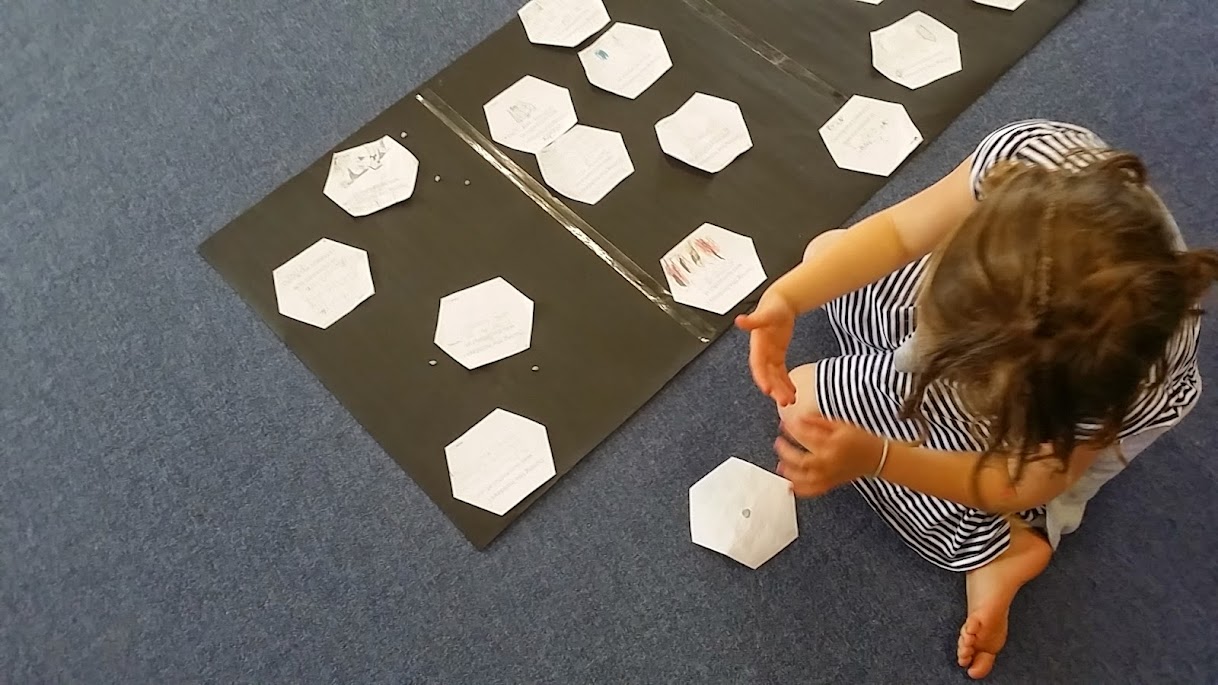I'm a teacher. Listening to, relating to and knowing my learners is so important. I care about provoking their wondering AND meeting each learner's differing needs. I enjoy planning with my kids - then I know they are going to be engaged. I am passionate about teaching our littlest learners to notice 'how' they are learning and how they might construct new learning.
I appreciate how through using symbols AND words AND hand signals, I enable learning about the levels of SOLO to be accessible to more learners in more ways.
 Last week I presented my first quickfire EduIgnite talk. Thank you +Sonya Van Schaijik for the friendly nudge yet again!
Last week I presented my first quickfire EduIgnite talk. Thank you +Sonya Van Schaijik for the friendly nudge yet again!
EduIgnite Evenings are an opportunity to bring people together. Food, beverages and conversations are shared. Attendance at your first Ignite evening is 'no strings' then to encourage sharing of practice and passions, at your second Ignite evening attendees are asked to present or bring a colleague - though I suspect all attendees will always be welcome. Auckland events are well orchestrated by +Andrew Cowie & +Mark Osborne
I was in remarkable, friendly, FUN company at the Auckland Public Library on Thursday evening. The presentations shared by passionate educators; Justine @digitallearnin and Diana @DianaWilkes, Sonya @vanschaijik, Fuatino @f_leaupepe, Holly @HmsMoore and Carolyn @CaroBush were each thoughtful and thought-provoking - I really look forward to 'rewinding' their videos when they are shared online.
Presentations are FAST - less is more! 5 mins maximum and your 20 slides auto progress every 15 secs. This leads to high energy sharing and - I found - very little time to refer to any notes so I abandoned plans and
I attempted to meet a challenge set by +Pam Hook earlier this year and use ONLY images on my slides. I failed! More effort is required in learning about 'less is more'...
Considering the way I communicate about SOLO, with hands, symbols, written and spoken word - and because I am intrigued - I've begun reading around the theory of communication (Weiner & Mehrabian, 1968), the power of non-verbal communication (Mehrabian http://www.kaaj.com/psych/smorder.html and around Birdwhistell's Kinesics. http://en.wikipedia.org/wiki/Ray_Birdwhistell. Obviously, this is a huge area to explore and my summer reading list is now longer than a certain 5 year old's Christmas list... Less is more = complex!
I then wondered if 7% of a message is conveyed through words, 38% is the way the message is shared, and 55% is non-verbal (Mehrabian), then what message is conveyed through my slides without my voice and 'flappy' hands?
Are written or spoken words more important? The screens, the nose-gazing, the 'both and'?
What if I attached any one of Scott Bradlee's tracks to it in place of silence? Or perhaps Ella's classic - "T'ain't What You Do..."
There are multiple ways in which we can present our learners with opportunities to explore and create understanding of ideas or concepts. And there were multiple ways in which my colleagues hooked me in and engaged me with their ideas and messages at EduIgnite last week.
To say there is a lot to learn in this world is stating the obvious.
One thing I am noticing is that actions do speak louder than...














